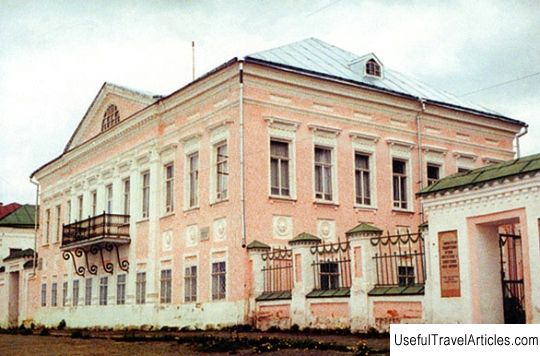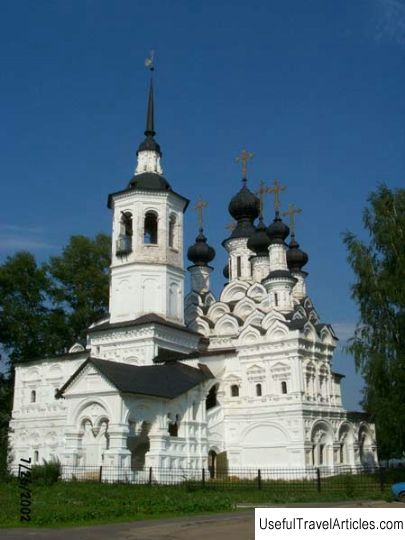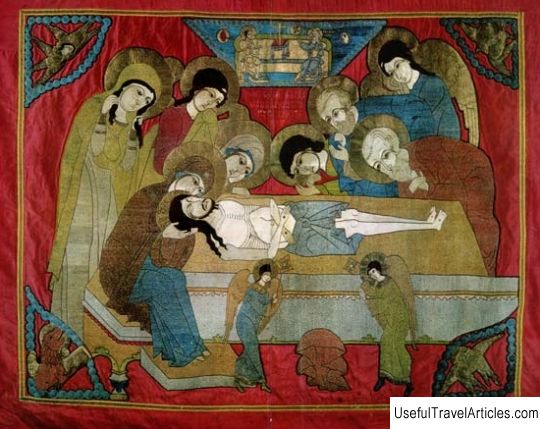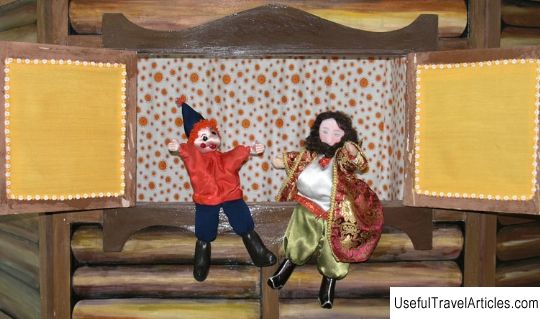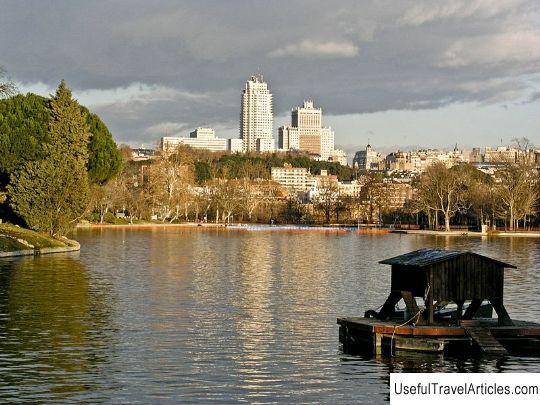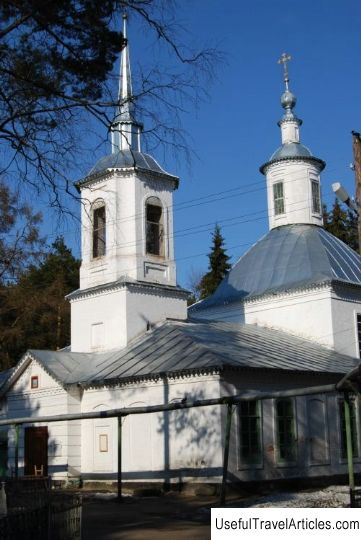Veliky Ustyug Museum-Reserve description and photos - Russia - North-West: Veliky Ustyug
Rating: 7,8/10 (5943 votes) Veliky Ustyug Museum-Reserve description and photos - Russia - North-West: Veliky Ustyug. Detailed information about the attraction. Description, photos and a map showing the nearest significant objects. Photo and descriptionVeliky Ustyug is rightfully considered an open-air museum, because the largest number of monasteries, temples, civil buildings, which are valuable architectural monuments, are under the jurisdiction of the Veliky Ustyug Museum-Reserve. The area of the museum territory is 7 hectares, and the area of premises is 4471 sq.m. It is believed that the year of the museum foundation is 1910. It was at this time in the Mikhailovo-Arkhangelsk Monastery that the opening of the church ancient storage took place - the first museum in the entire city. Almost all the work on the opening of the museum of ancient Russian antiquity was carried out by a committee under the leadership of the priest K.A. Bogoslovsky, who was the caretaker of the Veliky Ustyug religious school, the teacher of the school, V.P. Shlyapin. The ancient depository received church books, ancient manuscripts, household and church monuments, bearing in themselves historical significance. During its existence, antiquities were transferred from the John the Baptist Monastery, the Assumption Cathedral, Spasovsegradskaya and other churches. By the beginning of 1918, the museum's collection consisted of more than six hundred different kinds of exhibits, including silverware, icons, printed books, crosses and wooden sculptures. The workers of the committee did not carry out painstaking work not only in the field of collecting exhibits, but also in the field of their storage, and also carried out research work on the description of objects and developed numerous articles for magazines. November 8, 1918 at the exhibition of paintings by artist Borisov A.A. a museum of Severodvinsk culture was opened in Veliky Ustyug. The basis of the new museum fund was the especially valuable collections of the ancient storage, which were transferred to it in the winter of 1918. In an incredibly short time, a valuable fund was created, which determined the profile of the museum. In addition to the collections that were transferred from the ancient storage, a considerable number of exhibits were transferred to the museum from the requisition bureau and the commission for the confiscation of church relics and valuables. The following were awarded: women's jewelry, silver items, porcelain and paintings from the Moscow State Fund. In addition, the museum received personal collections of numismatics, paleontology, presented in the form of objects of the Stone Age and collected by the doctor Linovsky. In 1929, the museum acquired 963 books from the Gribanov factory library. From the beginning of 1924, the replenishment of the funds was carried out by transferring to the museum cultural property from churches and monasteries, which were subject to closure. In 1926, the Trinity Cathedral of the Trinity-Gledensky Monastery, as well as its iconostasis, sculptures, icons and bells were also transferred to the Veliky Ustyug Museum. During 1927-1929, the museum acquired crosses, icons, shroud and the cathedral library, which consisted of 3345 books. As time went on, and although the names of the Veliky Ustyug Museum changed, its tasks remained unshakable and unchanged, which were gradually embodied in life as people who are truly dedicated to their work, their names: M.P. Lukin, N.M. Davydova, L.F. Kunitsyna, E.G. Kukanova and many others. The most important areas of the museum's activities: scientific processing and storage of fund collections, restoration of architectural monuments, scientific and educational, exposition, exhibition and research work. In 1988, the famous Veliky Ustyug Museum received the status of a museum-reserve. Numerous stock collections of the museum have more than 90 thousand different kinds of items, and some of them are simply unique. More than ten new exhibitions are held in the museum halls every year, and the previous exhibitions are constantly updated. Architectural monuments of the 17th-18th centuries with preserved monumental paintings and iconostases have also become a museum display object. Many new forms of work have appeared in the museum today. You can see a unique collection of Christmas tree decorations, and on Christmas Day the “Nativity Show” is published, which in a playful way tells children about the Christmas holiday, conducting training courses in woodcarving and various master classes.     We also recommend reading Loreto Basilica (Basilica di Loreto) description and photos - Italy: Ancona Topic: Veliky Ustyug Museum-Reserve description and photos - Russia - North-West: Veliky Ustyug. |
